Reclaiming Ceremonies
Photographer Sue Reynolds first met Joe, seen below, at the Arlee Celebration, or powwow in 2006. Joe is getting ready to dance, as his ancestors did, to celebrate their culture. Dancers wear colorful, intricate regalia (outfits), including beaded and feathered clothing, which has been given to them by their families, and which represents hundreds of hours of craftsmanship. Rare eagle feathers are sometimes given to honor a dancer’s achievements and/or service to their community.
At the Arlee Celebration, Sue Reynolds noticed that Joe stood out among the junior Traditional Dancers for his intense concentration, beautiful outfit and straightforward manner. Two years later, again at the Arlee Celebration, Joe remained intently focused as his grandmother helped him get ready to dance.
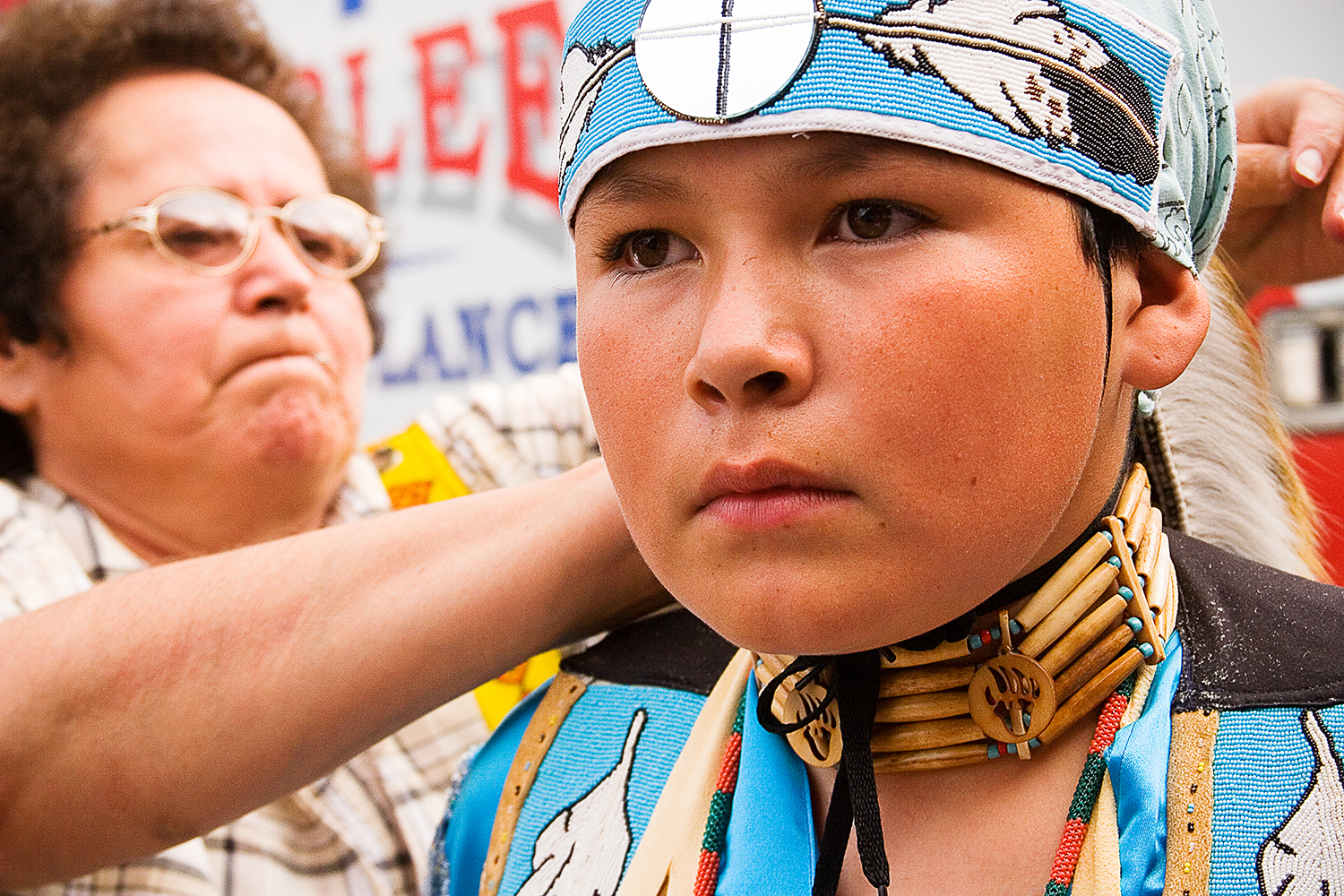
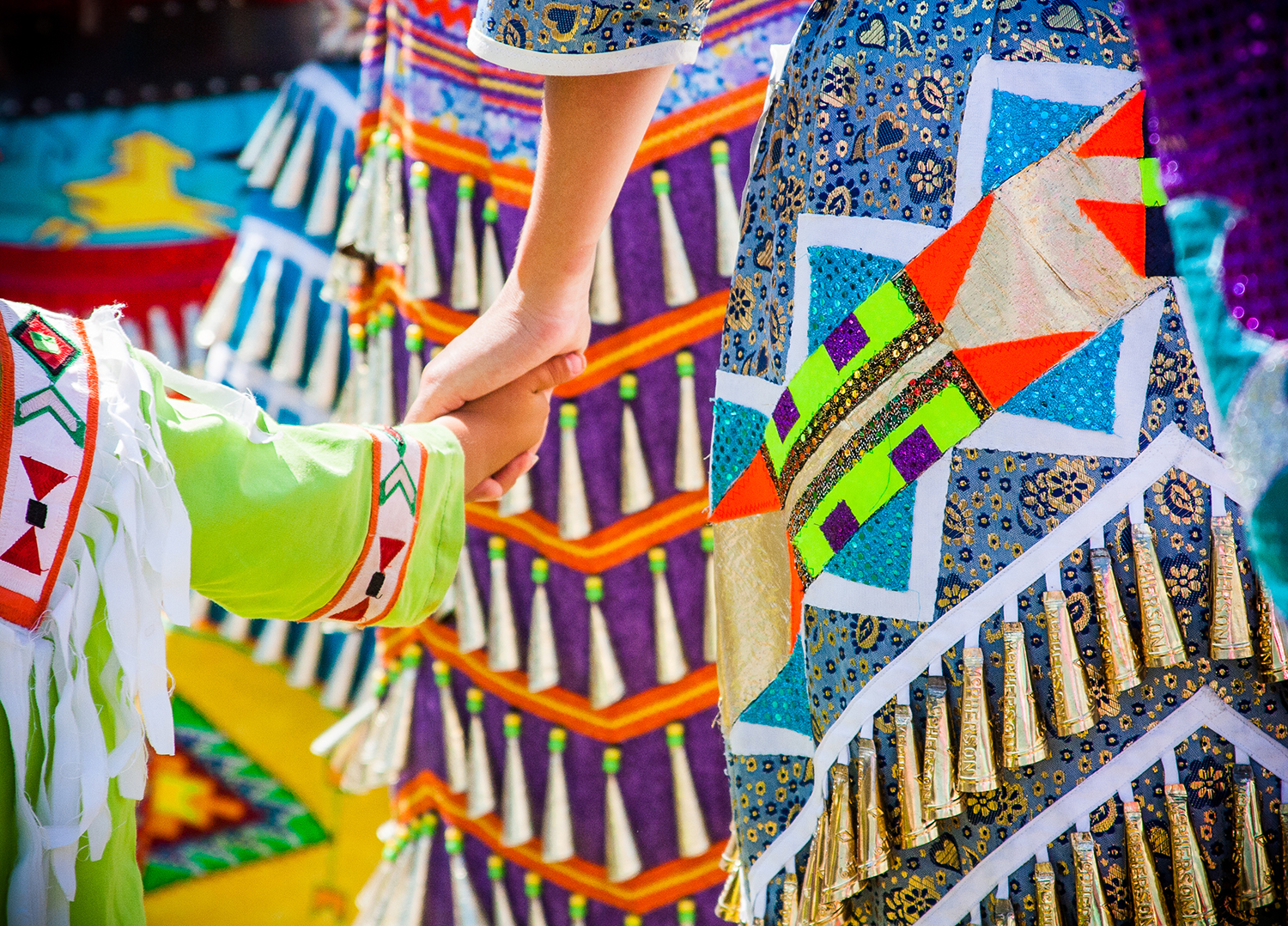
Discussion and Writing QuestionsThe top photograph is what is referred to as a documentary photograph: It clearly documents or records what is happening and to whom. The second photograph is referred to as a fine art photograph or image because it comes in close, giving you only part of the story and the subject, as it focuses more on overall design elements like colors, lines and shapes. See an inquiry approach to all Everyday Native photographs.
|
Powwows can last from one day to a week and take many months to organize. Dance arbors such as this large arena in the photograph below, are semi-permanent or permanent structures that are considered sacred space because of the traditional singing, drumming and dancing that takes place inside.
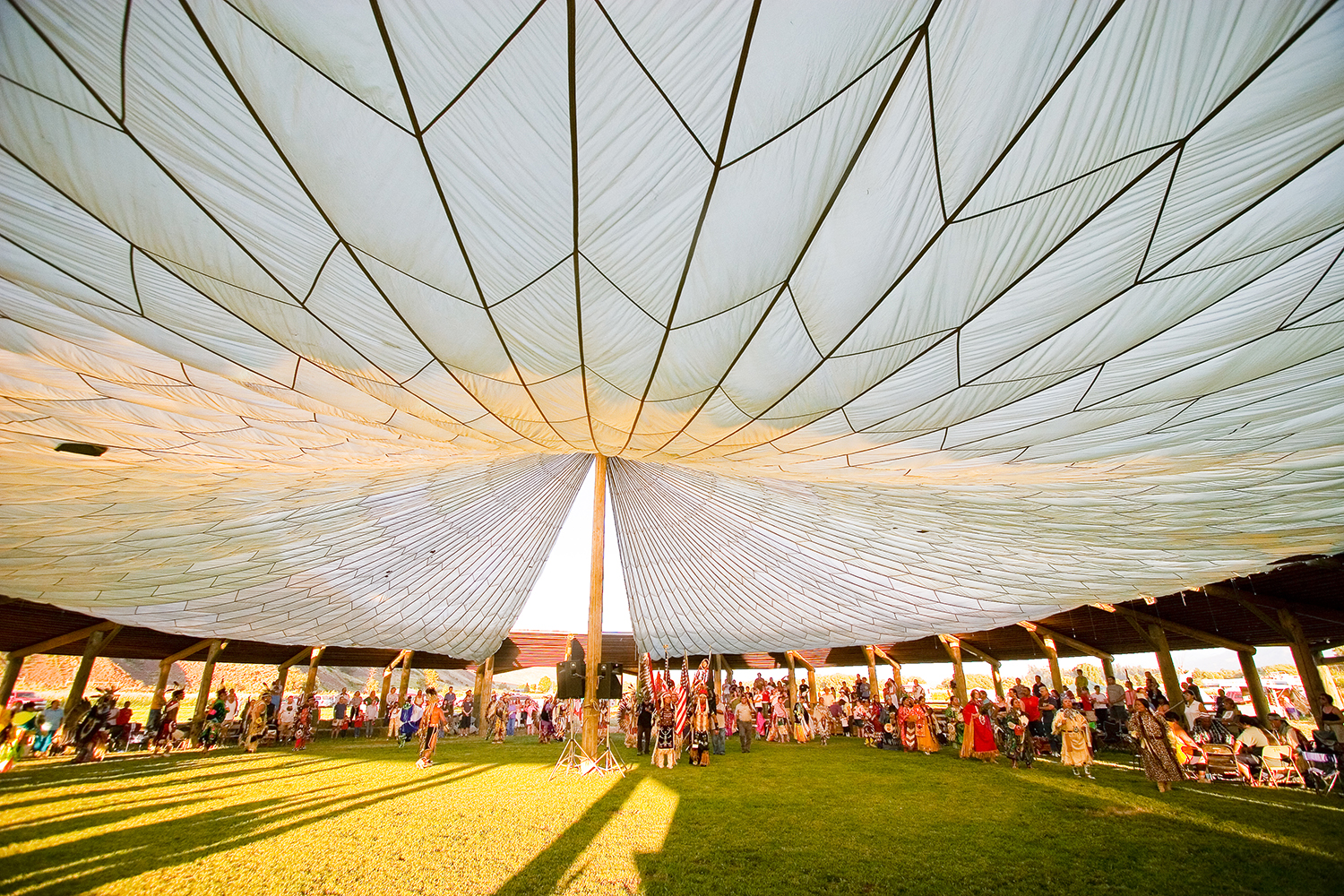
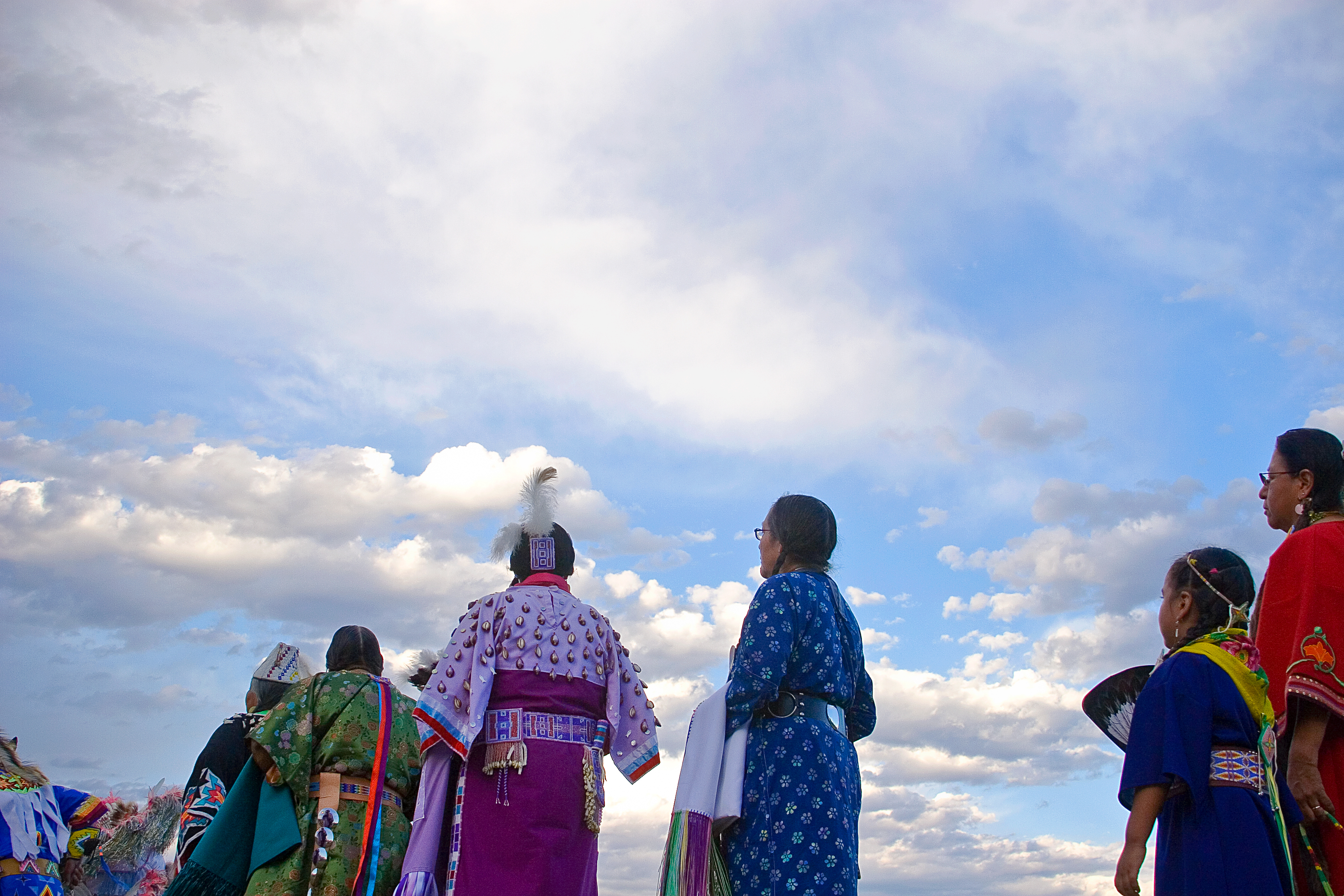
The line of brightly dressed women above are part of the evening session’s Grand Entry, when all dancers gather at the entrance to the arena where, accompanied by singing and drumming, they parade into the dance arbor. The Grand Entry for many tribes is the East entrance, where the sun rises. Many Native Americans consider the dancing, singing and drumming in the arena to be praying. They do this for family members in need and/or for the whole community. They are also celebrating life.
These women have just entered Crow Fair’s large dance arbor as the sun is setting. Crow Fair is one of the largest attended U.S. powwows in Indian Country, and the dancers and drums (drum groups who sing while drumming) come to Crow Fair from all over the West, including western and central Canada.
Discussion and Writing Questions
|
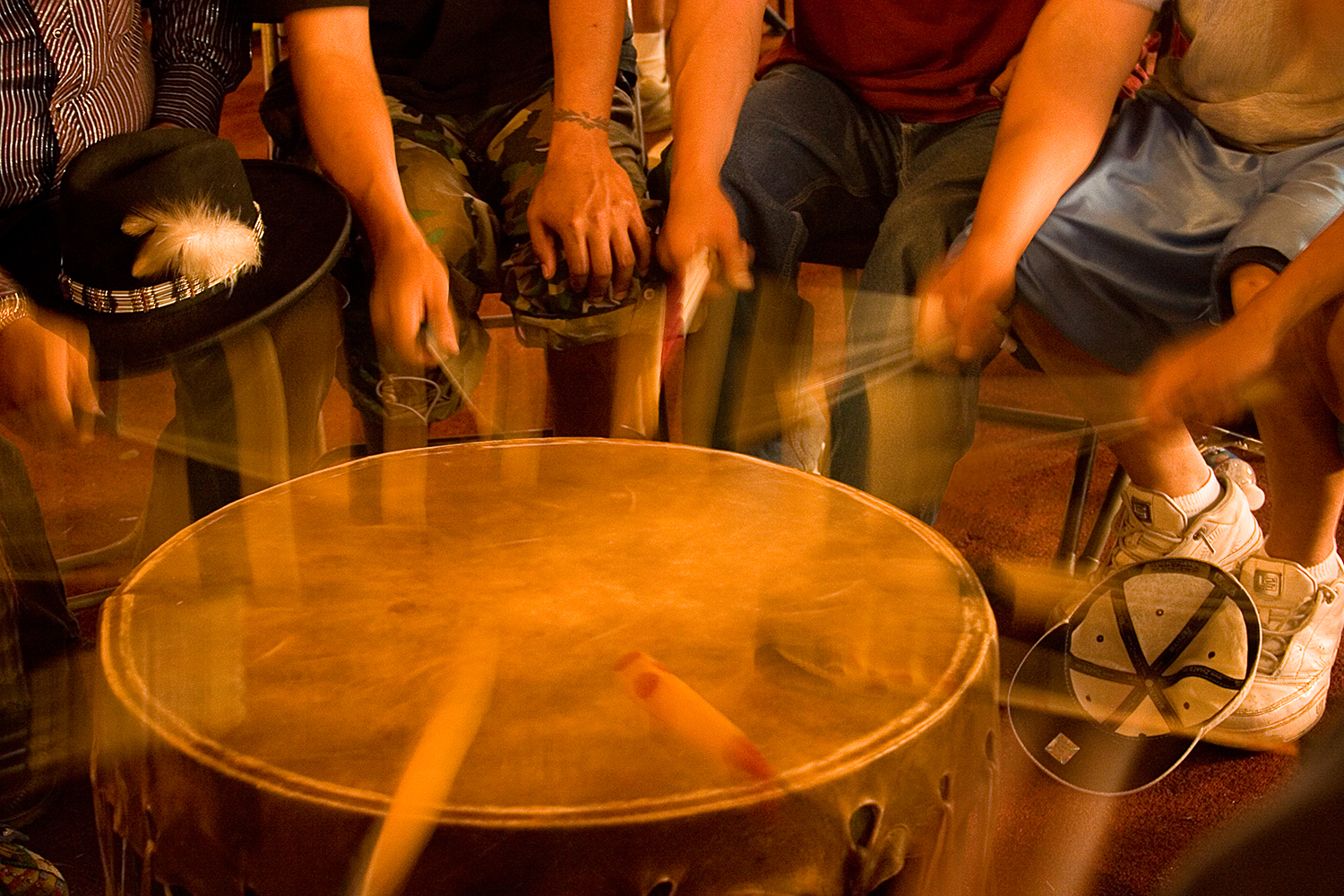

Use the # interpretation lesson in Interpretation Strategies to begin discussion and elicit one or two word descriptions of both photographs above. Create group or class poems from students’ responses.
Discussion and Writing Questions
|
Share one or both poems below by Victor Charlo. “Mobility” is suggested for all grades.
This excerpt from Victor Charlo's Poet's Statement reflects on how his Native history and experiences have influenced his poetry.
“Through reservation imagery, the sounds of my poetry, the symbols, the use of Salish words, I continue to teach myself so I won’t forget. These are the things that I want people to know: you do dig bitterroot, you do tan hides. That is how I was raised. I want people to get a sense of wonder. How did we get here? Is there a trail, a path that we can take so we can do it again? We aren’t always up there at the top of the mountain. Sometimes we are at the bottom of the mountain and you have to figure how to get up…That is what my poetry is about, how and why I write it…”
Click here to view poem full screen
MOBILITY
Indian youth are too mobile.
They flow and flow. We see them afraid
As we hit hard times. They laugh one day
And the next the fear of God has them shaking.
I fear their homelessness.
Dancing Boy, you have your mountain.
Sing me a brave song.
Dirty Corner Poems and Other Stories, by Victor A. Charlo. Available on Amazon.
Discussion and Writing Questions
Note: Students can research the sacred traditions of tribes near them or in their state. What are their ceremonies? Who leads their rituals? Why do tribal members participate in traditional ceremonies? |
Charlo’s poem, “Rebellion,” is suggested for older students.
These excerpts from Victor Charlo's Poet's Statement describe how his life as an American Indian has influenced his poetry:
"My poetry tells of the trickiness and difficulty of living in two worlds: Native and non-Native. Through my family, in other elders, in the lives of my children and grandchildren, my good friends, and all of my students, I have been able to discover and foster a continuity and understanding of my life lived in-between two worlds via poetry."
"My early experiences are why I write the way I do -- with as few words as possible. I cut to the quick. When I write I try to conjure up the old sayings, those words I grew up with that come out every now and then."
Click here to view poem full screen
REBELLION
Chokecherry leaves are red,
money trees quake a young grasshopper green.
Bark dazzles you like the snow vest
on dancing boy as apples so good are gone
Outside the kitchen window
Beyond right through that narrow passage.
Jocko, who is going to teach me to dance?
Should I ask the dancing boy to show me how?
Knees bent, legs raised, arm up, ribbons
Flowing in the wind, eagle feathers, dancing, dancing.
They ask me to go to Wounded Knee
But I say I am helper here at home
and I have to tend to the garden.
They agree, for people have died at Wounded Knee,
And it is time that they come home.
I am home, that is all the wisdom I need to know
for now. White Bird Dancing.
Everyone should have a place at least once
in their life that is secure, where they can
Come and go as freely as they want,
break camp. Dancing Boy, you have the mountain!
Sing me your song! Teach me your dance!
Dirty Corner Poems and Other Stories, by Victor A. Charlo. Available on Amazon.
Discussion and Writing QuestionsRead the poem to your students and then read it again slowly, or share the written version.
Note: Older students can research Wounded Knee to continue this discussion or you can explain that it was an historic massacre that killed many American Indians. They can further research the history of government suppression of American Indian religious ceremonies for a tribe in their state or region. In addition to secondary sources, students can contact an elder from a local tribe to learn more about this subject. |
Other ResourcesArlee Powwow Website "Crow Fair" Facebook. "Heart Butte Indian Days Powwow." Facebook. "Lakota Powwow & Celebrations Calendar." Travel South Dakota. Tribal Directory Website "Rules Governing the Court of Indian Offenses." Department of the Interior, Office of Indian Affairs, 30 March, 1883. |
Click here to access our extensive library of related websites, readings, videos, and more.
